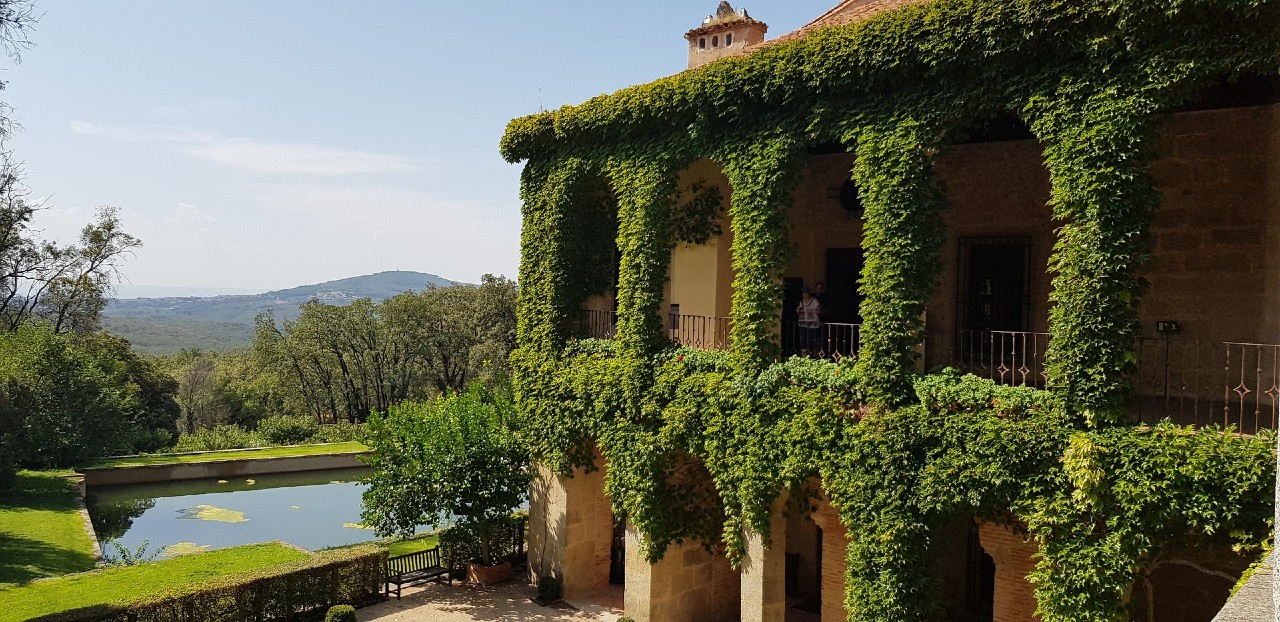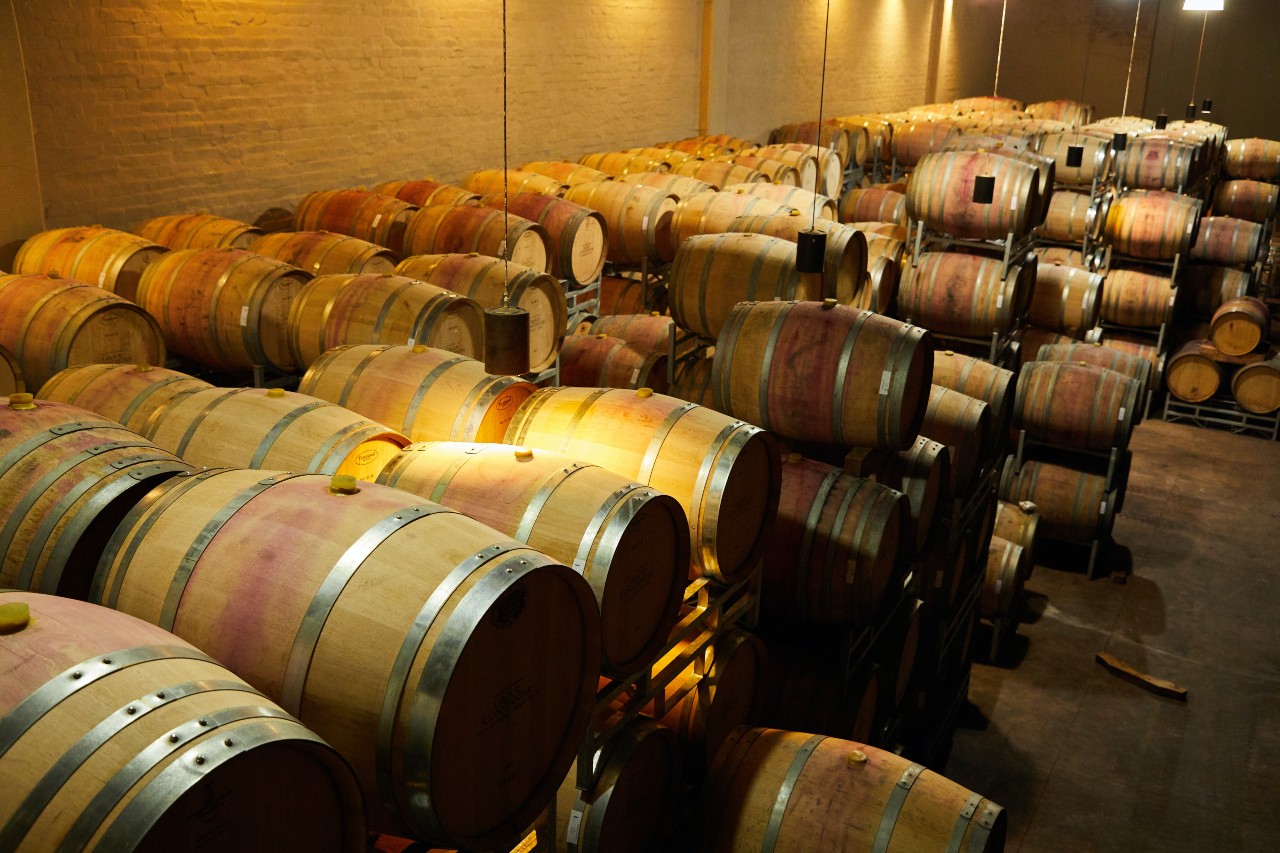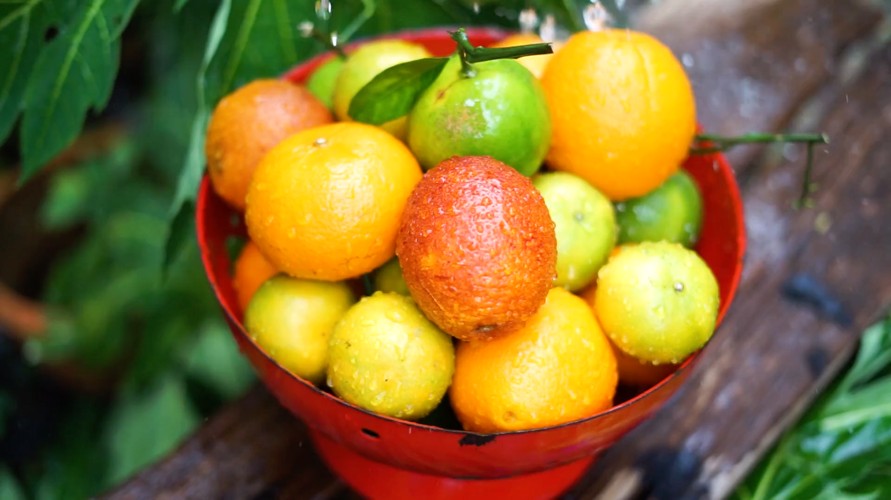 It’s February and apart from the cold weather we’re having this year in Spain, it’s the month to celebrate with Cupid, the month of love. Beyond the love of a couple, I’ve always like to celebrate Saint Valentine with the people I love… I’m dedicating this Saint Valentine to my friend Daniel who left us some months ago and who every year on Saint Valentine’s day lovingly asked me “Do you want to be my Valentine?” This one’s for you my friend.
It’s February and apart from the cold weather we’re having this year in Spain, it’s the month to celebrate with Cupid, the month of love. Beyond the love of a couple, I’ve always like to celebrate Saint Valentine with the people I love… I’m dedicating this Saint Valentine to my friend Daniel who left us some months ago and who every year on Saint Valentine’s day lovingly asked me “Do you want to be my Valentine?” This one’s for you my friend.
But as I’m fascinated by mystery, mysticism and seduction, what better than to investigate aphrodisiacs and the relationship between erotism and gastronomy through history with a thorough, objective approach and a minimum of scientific rigour.
 Ángel González Vera, President of the Committee of the Aragonese Academy of Gastronomy, is one of the people who most knows about the relationship that historically has linked gastronomy and eroticism. I have taken as a base the study and the talk he gave when he entered the Aragonese Academy of Gastronomy, summarizing the document, as it’s a piece of research which is enjoyable to read and at the same time rigorous and academically sound.
Ángel González Vera, President of the Committee of the Aragonese Academy of Gastronomy, is one of the people who most knows about the relationship that historically has linked gastronomy and eroticism. I have taken as a base the study and the talk he gave when he entered the Aragonese Academy of Gastronomy, summarizing the document, as it’s a piece of research which is enjoyable to read and at the same time rigorous and academically sound.
I have searched and searched for information on the topic and to be honest I haven’t found a single study better than that of D. Ángel González Vera. I hope that this summary is sufficiently interesting so that you read the whole document.
From the beginning there has been a close relationship between gastronomy and eroticism. Men and women relate sexually to procreate and have offspring and, so conserve their species, and all their lives they need to feed themselves so as not to die. Sexuality and gastronomy are, therefore, both essential acts of life: the subsistence and maintenance of the species depend on them.
Man, the undisputed king of creation because of his condition of being rational, reveals himself and among many other things he discovers that both sex and food can be sources of pleasure, with the search for hedonistic enjoyment taking precedence from that moment and, on many occasions to the fulfilment of the divine order. Gluttony and lust, human actions considered as sins, also have the same origin, the survival instinct. The link between food and sexual enjoyment is marked in our subconscious from the moment we are born.
The feeling of the baby breastfed at his mother’s chest, immersed in the heat and smell of her breast, is pure eroticism, and leaves an indelible mark for the rest of his life.
This reminds me of the beautiful poem of “The Onion Lullaby” by Miguel Hernández and that in the first two stanzas says:
The onion is frost,
closed and poor:
frost of your days
and of my nights.
Hunger and onion:
black ice and
big, round frost.
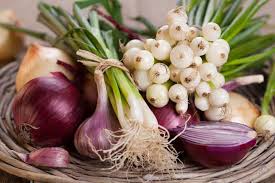 In the cradle of hunger
In the cradle of hunger
my child lay.
With onion blood
he was suckled.
But your blood,
frosted with sugar,
onion and hunger.
It is therefore understandable that, from the beginning of our civilization, we can find data indicating the acceptance by almost all known cultures of a cause-effect relationship between certain foods or more or less edible products and the increase in Desire and sexual pleasure.
These foods, with varied and often unexpected origins, sometimes animal, sometimes vegetable, maybe mineral, and in some cases human, are known as aphrodisiacs. The Royal Spanish Academy of Language defines aphrodisiacs as that “that which excites or stimulates sexual appetite”, its semantic origin being the name of the goddess Aphrodite, Greek goddess of love and sexuality, known to the Romans as Venus.
The first reference to aphrodisiacs is found in Egyptian papyri from 2000 to 1700. B.C. Reference is also made to them in the Bible, as well as in ancient Greek texts and in Hindu and Arabic books. The Romans leave us many references to their domestic habits and their way of eating, as well as the increasingly refined practices of their parties and banquets. We all of us have in our minds scenes of how were those great orgies of the Roman patrician class, where they tasted dishes as unique as flamingo tongues, larks, primed lilies, wild boars stuffed with thrush, etc., and in which grapes and apples, signs of the greatest erotic pleasure, were always present.
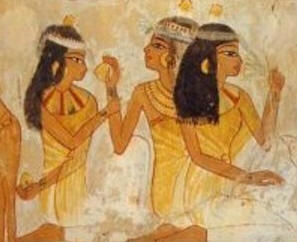 Cultures such as the Egyptian, Oriental or Muslim, have left us a good number of references to products and recipes that, perhaps with a refinement and originality superior to our Christian culture, have been considered as aphrodisiacs. Ginseng, pepper, rhino horn, along with opium, marijuana and coca, are important examples of this.
Cultures such as the Egyptian, Oriental or Muslim, have left us a good number of references to products and recipes that, perhaps with a refinement and originality superior to our Christian culture, have been considered as aphrodisiacs. Ginseng, pepper, rhino horn, along with opium, marijuana and coca, are important examples of this.
The Middle Ages leave us little information about a cuisine related to sex, something that on the other hand should not surprise us if we take into account the control imposed by the Catholic Church at that time over these questions.
However, we do know that spells and love potions existed, used by women who were matchmakers and witches from a coven, used more for overcoming difficulties in the search for descendants rather than amorous practices between lovers.
In the Renaissance courts of Italy, France and Spain a good tasting, refined and ever more specialized cuisine appeared. Within this new context of gallant and noble gastronomy we find dishes, condiments and foods that acquire fame as aphrodisiacs, good for awakening the desires of the lady or gentleman desperately looking to satisfy their passions. Catherine of Medici popularized the use of saffron and artichokes as sexual stimulators, whilst her pastries of cockerels’ crests, livers and testicles became famous beyond the borders. Meanwhile in the French court the consumption of oysters, truffles, frogs’ legs and shellfish was de rigeur.
 In Spain, the Renaissance is adorned by our privileged position, of being the architects of the discovery of a new world. First to our cuisine, and later to that of the whole of Europe, new products are incorporated, such as cocoa, sugar, potatoes or tomatoes, along with a host of spices. Most of them, perhaps because of their novelty and scarcity, will have great aphrodisiac virtues attributed to them, which still survive today. But our contribution to the hedonistic enjoyment of a good meal suited to the game of love is substantially inferior to that of the contemporary customs of the French or Italian monarchies. Recipes with a marked aphrodisiac effect generally appeared as the result of the search for remedies for reduced sterility or to increase male vigour. We all know the dangerous diets to which our sovereign Ferdinand the Catholic had to submit to in order to “fulfil” his second wife, Germana de Foix.
In Spain, the Renaissance is adorned by our privileged position, of being the architects of the discovery of a new world. First to our cuisine, and later to that of the whole of Europe, new products are incorporated, such as cocoa, sugar, potatoes or tomatoes, along with a host of spices. Most of them, perhaps because of their novelty and scarcity, will have great aphrodisiac virtues attributed to them, which still survive today. But our contribution to the hedonistic enjoyment of a good meal suited to the game of love is substantially inferior to that of the contemporary customs of the French or Italian monarchies. Recipes with a marked aphrodisiac effect generally appeared as the result of the search for remedies for reduced sterility or to increase male vigour. We all know the dangerous diets to which our sovereign Ferdinand the Catholic had to submit to in order to “fulfil” his second wife, Germana de Foix.
Quince was widely used in these practices; it being assigned properties said to promote sexual attraction (maybe its distinctive smell was particularly attractive given the usual and unpleasant smells given off by the bodies of the ladies and gentlemen of the period). The meat of the hare and roast fennel appear in the recipe book of Francisco Martínez Montillo, Felipe III’s chef, as suitable products to achieve the favours of the ladies.
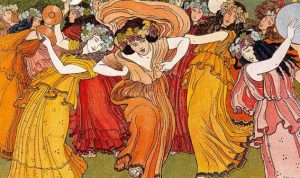 Regarding gastronomy and its possible erotic effects, before entering the enumeration of the products that at one time or another have acquired the fame of aphrodisiacs, let’s say that a good number of them have reached this qualifier because of their shape or through their resemblance to the male or female genital organs. Oysters, asparagus, bananas, etc., are a good example of this. In other cases, it has been the association of ideas or suggestion that has produced the association; eating the vital organ of an animal leads us to think that it will allow us to absorb its sexual strength or power. And generalizing even more if possible, and despite the risk of falling into stupidity, it can be said that as a rule everything that sounds French seems more erotic (it’s not the same to call a dish, mushrooms with garlic, as it is to say champignons a la Provençale).
Regarding gastronomy and its possible erotic effects, before entering the enumeration of the products that at one time or another have acquired the fame of aphrodisiacs, let’s say that a good number of them have reached this qualifier because of their shape or through their resemblance to the male or female genital organs. Oysters, asparagus, bananas, etc., are a good example of this. In other cases, it has been the association of ideas or suggestion that has produced the association; eating the vital organ of an animal leads us to think that it will allow us to absorb its sexual strength or power. And generalizing even more if possible, and despite the risk of falling into stupidity, it can be said that as a rule everything that sounds French seems more erotic (it’s not the same to call a dish, mushrooms with garlic, as it is to say champignons a la Provençale).
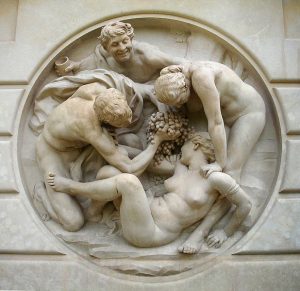 There are many, perhaps too many, foods that for one reason or another are considered aphrodisiacs, but without a doubt there are two that reign over all of them: the apple and the grape. The apple, fruit of the tree of good and evil, was the instrument with which Eve seduced Adam into rebelling against his creator; and in Greek mythology it is always considered as the representative fruit of desire and love, the fruit of Aphrodite. Regarding grapes, they were present in any ancient festival worth its salt. Grapes were the fruit associated with pleasure and fertility, and with Dionysius, Priapus, Bacchus and all the joyous Gods that existed, because from grapes comes wine and without wine there is less joy and revelry.
There are many, perhaps too many, foods that for one reason or another are considered aphrodisiacs, but without a doubt there are two that reign over all of them: the apple and the grape. The apple, fruit of the tree of good and evil, was the instrument with which Eve seduced Adam into rebelling against his creator; and in Greek mythology it is always considered as the representative fruit of desire and love, the fruit of Aphrodite. Regarding grapes, they were present in any ancient festival worth its salt. Grapes were the fruit associated with pleasure and fertility, and with Dionysius, Priapus, Bacchus and all the joyous Gods that existed, because from grapes comes wine and without wine there is less joy and revelry.
Ordered by their character, condition or rarity, I will cite below a few of those which, as I have said before, constitute the almost infinite universe of aphrodisiacs, starting with those that come from the animal world:
Oysters are the queens of aphrodisiacal cuisine. Aphrodite was born out of the foam of the waves inside a shell. The fact that we eat them almost raw and their similarity to the female sexual organ would seem to be why, since the earliest days of our Civilization the reasons why they achieved the fame they still enjoy today. And very possibly one thing led to another, because of their similarity to oysters, mussels, sea-urchins and Shellfish in general are considered to be highly aphrodisiacal foods and form part of any self-respecting erotic meal.
 Sheep’s vulva, cow’s udders (for women) and the testicles of various animals (for the men.) have always been considered excellent aphrodisiacs, both eaten directly or as part, as we saw before, of various potions and spells.
Sheep’s vulva, cow’s udders (for women) and the testicles of various animals (for the men.) have always been considered excellent aphrodisiacs, both eaten directly or as part, as we saw before, of various potions and spells.
Turtles and turtle’s eggs, above all in Eastern cultures, are consumed disproportionately due to their exacerbated fame as being a food that gives the man great sexual vigour. Consumption has been so high putting the continuity of certain species of turtle in such danger that some Asian governments have launched campaigns aimed at discouraging the consumption of these animals, campaigns which usually feature a beautiful girl saying: “I do not need my boyfriend to consume turtle eggs to feel satisfied
 Snails and frogs have been considered by many civilizations as a highly aphrodisiac meat. The Egyptians have left us this in writing. Perhaps the shape of the spiced and conveniently placed frog, which somehow reminds of female hips, has contributed to it. The snail is more a food promoted by local and rural cultures; That is why there are many farmers who consider that eating snails serves to increase male vigour, except during the rigours of Summer, in the words of the Catalan proverb: «In July neither women nor snails».
Snails and frogs have been considered by many civilizations as a highly aphrodisiac meat. The Egyptians have left us this in writing. Perhaps the shape of the spiced and conveniently placed frog, which somehow reminds of female hips, has contributed to it. The snail is more a food promoted by local and rural cultures; That is why there are many farmers who consider that eating snails serves to increase male vigour, except during the rigours of Summer, in the words of the Catalan proverb: «In July neither women nor snails».
But it is the vegetable kingdom that offers us the largest number of aphrodisiac foods; fruits, tubers, shoots or leaves, consumed directly either raw or cooked, drunk as teas or used as a condiment or as spices. These make up a wide range of products which for one reason or another have acquired a reputation for favouring love and sex. Previously I mentioned some of the more traditional ones, below, with it being an exhaustive list, I will go over some more:
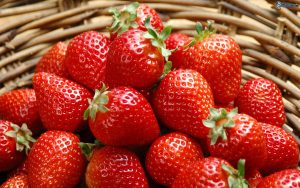 Strawberries, delicate fruit nipples that in the code of eroticism invite love, are the ideal complement to a glass of champagne. Paulina Bonaparte, sister of Emperor Napoleon, a libidinous and very promiscuous woman, after her very numerous nights of passion, when she had relationships with men of all types, sometimes in brothels or filthy booths, so to have sex with greater freedom. was served, and once back in her palace, would be served oysters, champagne and strawberries, whilst taking a restful bath.
Strawberries, delicate fruit nipples that in the code of eroticism invite love, are the ideal complement to a glass of champagne. Paulina Bonaparte, sister of Emperor Napoleon, a libidinous and very promiscuous woman, after her very numerous nights of passion, when she had relationships with men of all types, sometimes in brothels or filthy booths, so to have sex with greater freedom. was served, and once back in her palace, would be served oysters, champagne and strawberries, whilst taking a restful bath.
Bananas are associated with erotic energy in the tantra and are the perfect phallic symbol.
Peaches perhaps the most sensual of all fruits, for its perfume, its soft texture and its pink colour, is the eloquent representation of the intimate parts of women.
Figs, in ancient Greece, it was one of the sacred foods associated with fertility and love.
Pistachios take their reputation as an aphrodisiac by being consumed, almost permanently, by the women of the Turkish and oriental harems, in the form of cupcakes made with syrup and honey
Coffee, tea and chocolate have erotic value, especially because of the rituals surrounding their consumption in some cultures. Participating in the tea ceremony, in Japan, is an experience that captivates not only the taste of the consumer, but also the other senses that are invaded by the sexual mysticism of the ritual.
 Chocolate contains an alkaloid, theobromine, which increases the vitality in those who consume it. Hernán Cortes tasted chocolate in the court of the Emperor Moctezuma and had no doubts about bringing cocoa plants to Spain, where it became so famous as an aphrodisiac that the ladies of the Spanish nobility consumed it in secret.
Chocolate contains an alkaloid, theobromine, which increases the vitality in those who consume it. Hernán Cortes tasted chocolate in the court of the Emperor Moctezuma and had no doubts about bringing cocoa plants to Spain, where it became so famous as an aphrodisiac that the ladies of the Spanish nobility consumed it in secret.
And what to say about honey, food with great energetic power, and always considered as great boost for sexual vigour; where else does the phrase “honeymoon” originate?
I mentioned them before, but must mention again those which possibly most stand out among the long list of aphrodisiacs: garlic, artichokes, aubergines, asparagus and which today has probably the greatest number of fans, the truffle, sometimes known as the testicle of the earth, its smell, its taste and let’s say it its high price, have made it the centre of most tables where they serve erotic celebratory menus.
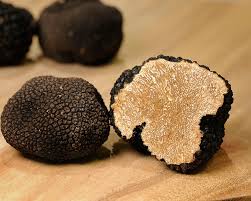 We cannot abandon this list of aphrodisiac vegetable products without referring to aromatic herbs, rare and of many different forms, used in erotic cuisine, either as a condiment, being eaten directly, as a herbal tea or in cooking.
We cannot abandon this list of aphrodisiac vegetable products without referring to aromatic herbs, rare and of many different forms, used in erotic cuisine, either as a condiment, being eaten directly, as a herbal tea or in cooking.
To name just a few, amongst the many that we know, the following are considered to be very erotic: basil, capers, anise, saffron, cinnamon, cardamom, curry (mixture of various herbs), ginger, mint, mustard, thyme, parsley, vanilla, etc. At present, the most famous aphrodisiacs, perhaps because of their exoticism or their high price are, saffron, cinnamon, curry and vanilla, we also see that the latest trends in erotic cuisine point to the use of herbs that until now were used successfully as medicinal plants, such as, coriander, lemon balm and Melissa.
As I have said before, the main aim of this work is to cover gastronomic matters, I can’t resist, however briefly dedicating some lines to what is known as the aphrodisiacs of aromatherapy.
Undoubtedly, the aromas have something to do with cooking, more if we look at the new trends of modern cuisine, and therefore it should not surprise us that some culinary dishes have acquired the character of aphrodisiacs precisely because of the aroma they give off. It is said that there are aromas that arouse passion and others that extinguish it. Adhering to this idea, the following will stand out as having the greatest and most widespread recognition throughout history:
Jasmine. Its fragrance is enticing, and its effect has been known since the time of the maharajahs and the sultans of the East. In India it is known as the King of the Night, and women put jasmine flowers in their hair at dusk in order to seduce men. It is used at weddings as a garland because of its pleasant aroma and its sorcerous effect.
 Rose. Is the queen of flowers. Its delicate fragrance seduces us, and its effect must also be seductive. Cleopatra bathed in milk infused with rose petals.
Rose. Is the queen of flowers. Its delicate fragrance seduces us, and its effect must also be seductive. Cleopatra bathed in milk infused with rose petals.
Vanilla. We all know its sweet and penetrating aroma. It is believed to be an aphrodisiac because its aroma brings to mind memories of breast milk.
Ginger. It has a strong smell and a stimulating effect
Cloves. Its effects, even having a not excessively pleasant aroma, are considered highly stimulating sexually speaking.
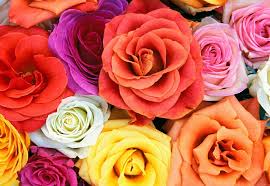 Ylang ylang. Also known as the perfume tree. It is a tree of some ten metres, which grows in warm moist climates. It has greeny, yellow flowers from which is obtained a perfume oil that is regarded as a powerful aphrodisiac. It is originally from the Philippines or Indonesia but is now primarily found in Polynesia
Ylang ylang. Also known as the perfume tree. It is a tree of some ten metres, which grows in warm moist climates. It has greeny, yellow flowers from which is obtained a perfume oil that is regarded as a powerful aphrodisiac. It is originally from the Philippines or Indonesia but is now primarily found in Polynesia
A large number of researchers specialized in dietetics and food, have tried to discover how much of this wide and intricate world of aphrodisiacs has a scientific basis and how much is simply myth without rigour or credibility.
For Brewer, a scientist at the Queen Elisabeth Hospital in Norfolk (USA), foods such as chocolate have a texture, taste and smell that, when they are introduced into the mouth, the numerous nerve endings of the lips, nose and the tongue receive information capable of producing certain hormones and other substances such as endorphins which provoke euphoria and that feel good factor in people.
It has been proven that the phytoestrogens, abundant in legumes and vegetables, help to compensate for the loss of oestrogen that occurs during the menopause, a physiological stage of women in which there is a drastic loss of libido, something which can be mitigated by a diet rich in isoflavones.
It has also been proven that a low zinc content can produce sexual dysfunction, and that it is precisely oysters that can provide the body with high doses of this mineral.
 Chili and chilli peppers are credited with the ability to cause secretion of endorphins that are a natural stimulant. Garlic contains compounds that favour circulation and blood flow, both necessary for the stimulation of sexual organs.
Chili and chilli peppers are credited with the ability to cause secretion of endorphins that are a natural stimulant. Garlic contains compounds that favour circulation and blood flow, both necessary for the stimulation of sexual organs.
Aphrodisiacs or erotic gastronomy?
As work has progressed, my confusion has increased. Initially I intended to write a complete exposition of how much in the long list or in the extensive literary work on the world of aphrodisiac products, was true or was lies but this has given way to the much more interesting world of erotic cuisine. After reading and rereading books, articles and messages of different origin but always related to the aphrodisiac gastronomy, the feeling I have is that I am facing an enormous shell of little value, very low culinary interest and even less hedonistic and emotional value , or to put it another way, an extremely attractive hoax. None of the sensations or effects attributed to the various products classified as having high erotic content have been formally proven or contrasted by serious research and with a minimum of scientific rigour. No one really knows nor cares for example whether this or that virtue attributed to coriander or striped ginseng, is real. The feeling I increasingly have is that the erotic impulse, which to a greater or lesser extent drives human beings throughout their lives, is being used, as marketing, almost always very effective, aimed at promoting the sale of this or that food product. If we have to sell something of little acceptance, or of a very high price, let’s put the aphrodisiac product label and we will probably have achieved success; it will be sold as “manna from heaven” or even better. Such is the case, that we can observe how, for some time now, the terms are being reversed in such a way that it is not the aphrodisiac product that leads us to the erotic but that it is eroticism that leads us to the product.
It is difficult to find a cause-effect relationship between the consumption of certain foods and the state of erotic excitement of their consumers. If it is difficult to do so from a scientific point of view it is even more so at a practical level. The essay by the eminent Chilean writer Isabel Allende, entitled Aphrodite, in which the author dares to explore what she describes as the world of the relationship between food and eroticism – “the weaknesses of the flesh that tempt me the most” – and which she subtitles Stories, Recipes and Other Aphrodisiacs, which should serve to warn the reader about its content, Allende tells us that she does not accept that her essay is merely a collection of recipes to be used together with a long list of products and compounds which are plagued by rarities and eccentricities, with purported aphrodisiac virtues, but are something more:
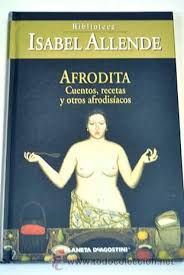 Justifying the usefulness of a collection of recipes or erotic instructions is not easy, thousands are published every year and frankly I don’t know who buys them, because I still don’t know who cooks or makes love with a manual.
Justifying the usefulness of a collection of recipes or erotic instructions is not easy, thousands are published every year and frankly I don’t know who buys them, because I still don’t know who cooks or makes love with a manual.
And, indeed, the author Allende offers us a charming vision of what is in her opinion a suggestive kitchen, full of erotic sensations that can induce rather than break the sexual attraction of many lovers, whilst being sceptical about the promises made for many of the Products catalogued as aphrodisiacs:
I will try to get to the truth, but it will not always be possible. What can be said, for example, of parsley that might generate interest? Sometimes you just have to lie.
Without losing the rigour that the history or practice of the kitchen she describes requires, Allende drops touches of irony and wise humour, which call into question many of the facts that have always been considered as true. And whilst taking care that her narrative does not reach the level or the clichés which usually adorn erotic or pornographic literature, by using small confessions where she tells of her most intimate desires and passions, she causes the reader to be invaded on many occasions by enjoyable sensations of pleasure and hedonism, just as if it were a great work of erotic narration
The fact was that, after reading Isabel Allende’s work, my vision of aphrodisiac foods changed; I felt inclined to put forward new arguments and different points of view to those previously expounded with the idea of judging differently the existence or not of an aphrodisiac gastronomy.
It is worth our while to recreate our ego of men who love gastronomy savouring the reflections that the writer Allende offers us in one of the many occasions when she deliberately lets the reader penetrate her world of fantasies and erotic desires, telling us that gourmets able to choose dishes from a menu written in French and discuss wines with the sommelier inspire respect in women, respect that can be transmuted into an appetite for love. They like men who know how to cook and go further:
The Epicureans who lovingly choose the freshest and most sensual ingredients, prepare them artistically and offer them as a gift to the senses and the soul; those classy men who uncork the bottles, sniff the wine and pour it into our glass first, so that we can try it, while they describe the colour, the tenderness, the aroma and texture of the filet mignon in that tone that, we believe, they will later use to refer to our own charms, of need, we think: this man must have all his senses refined, even that of humour. Who knows … maybe he is even able to laugh at himself! When we observe how they clean, dress then cook the shrimps, we imagine their patience and skill performing an erotic massage. If you delicately taste a piece of fish to verify its cooking, we tremble, anticipating that accomplished nibble on our neck.
 How can we not be aware of the enormous, erotic charge a dinner can have when it is perfectly staged, choosing the correct time and place and surrounding it with an atmosphere that is suggestive, yet imbued with elegance and insinuation.
How can we not be aware of the enormous, erotic charge a dinner can have when it is perfectly staged, choosing the correct time and place and surrounding it with an atmosphere that is suggestive, yet imbued with elegance and insinuation.
Let us remember how during much of this work we have asked if an erotic cuisine based on aphrodisiac products and spells exists. In my opinion, the answer is not a straightforward one. We could state that yes, it does exist, or we could roundly deny its existence and add that all which has been said or written about this sounds to us like pure fanfare.
We can also accept the existence of all or part of those traditionally considered as foods with aphrodisiac properties. We may doubt everything, or accept everything, but one thing I think we should be sure about: whatever our position, the effects can only be positive if we add a good dose of sensitivity and fantasy to the power of the aphrodisiac and, should it be possible, the supreme condition of being in love.
BIBLIOGRAPHY.- from electronic sources




